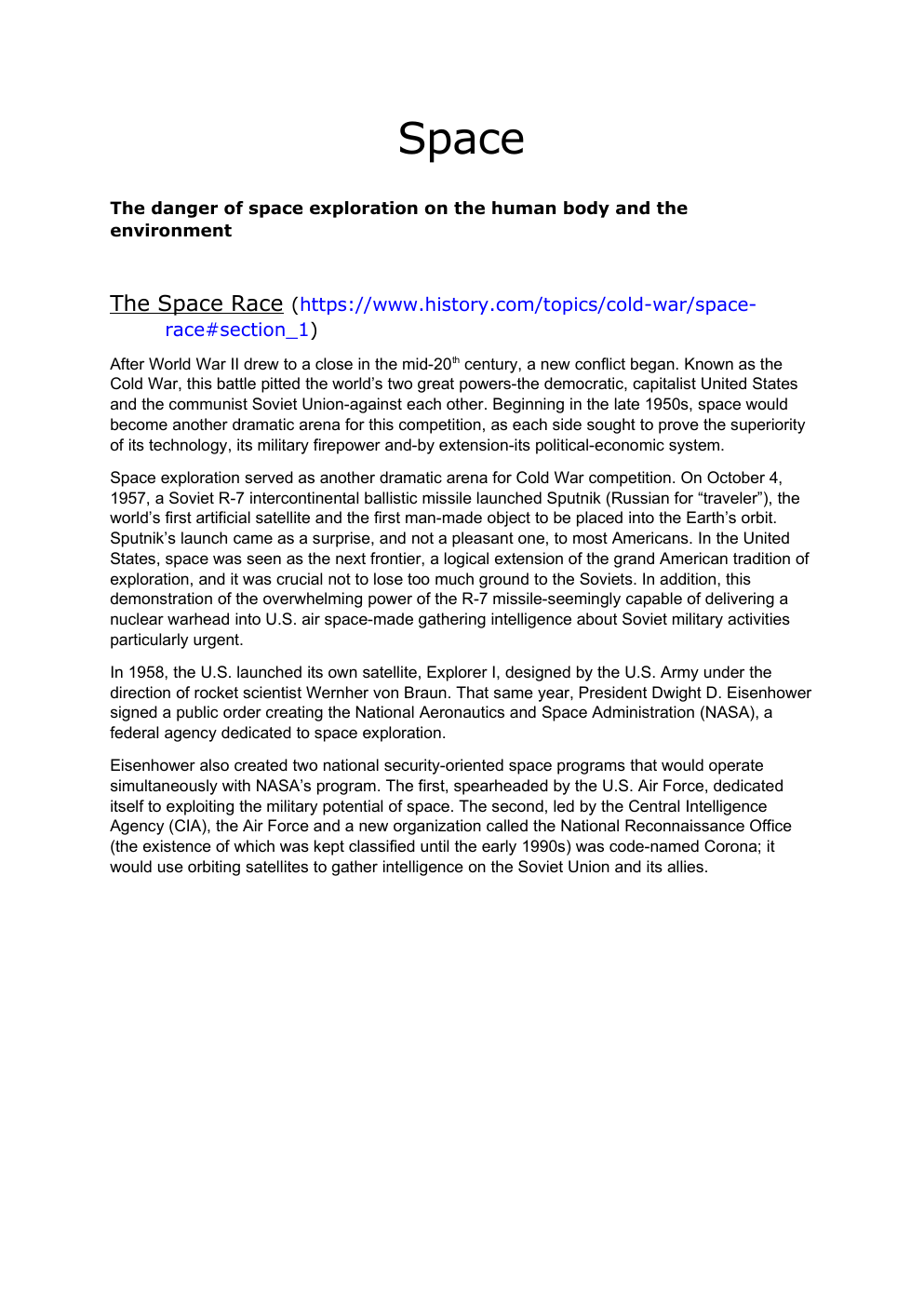The danger of space exploration on the human body and the environment
Publié le 16/06/2022

Extrait du document
«
Space
The danger of space exploration on the human body and the
environment
The Space Race (https://www.history.com/topics/cold-war/spacerace#section_1)
After World War II drew to a close in the mid-20th century, a new conflict began.
Known as the
Cold War, this battle pitted the world’s two great powers-the democratic, capitalist United States
and the communist Soviet Union-against each other.
Beginning in the late 1950s, space would
become another dramatic arena for this competition, as each side sought to prove the superiority
of its technology, its military firepower and-by extension-its political-economic system.
Space exploration served as another dramatic arena for Cold War competition.
On October 4,
1957, a Soviet R-7 intercontinental ballistic missile launched Sputnik (Russian for “traveler”), the
world’s first artificial satellite and the first man-made object to be placed into the Earth’s orbit.
Sputnik’s launch came as a surprise, and not a pleasant one, to most Americans.
In the United
States, space was seen as the next frontier, a logical extension of the grand American tradition of
exploration, and it was crucial not to lose too much ground to the Soviets.
In addition, this
demonstration of the overwhelming power of the R-7 missile-seemingly capable of delivering a
nuclear warhead into U.S.
air space-made gathering intelligence about Soviet military activities
particularly urgent.
In 1958, the U.S.
launched its own satellite, Explorer I, designed by the U.S.
Army under the
direction of rocket scientist Wernher von Braun.
That same year, President Dwight D.
Eisenhower
signed a public order creating the National Aeronautics and Space Administration (NASA), a
federal agency dedicated to space exploration.
Eisenhower also created two national security-oriented space programs that would operate
simultaneously with NASA’s program.
The first, spearheaded by the U.S.
Air Force, dedicated
itself to exploiting the military potential of space.
The second, led by the Central Intelligence
Agency (CIA), the Air Force and a new organization called the National Reconnaissance Office
(the existence of which was kept classified until the early 1990s) was code-named Corona; it
would use orbiting satellites to gather intelligence on the Soviet Union and its allies..
»
↓↓↓ APERÇU DU DOCUMENT ↓↓↓
Liens utiles
- Do you believe that pop culture has made women nudity and body an object ?
- essay anglais: In my opinion, the improvement of human capacities poses several problems
- Article - The power of words - Words, a powerful political and social weapon ?
- After forever, I got out of bed and went to the closet where I kept the phone.
- ANTI-SEMITISM IN THE MEDIEVAL AND REFORMATION PERIODS


